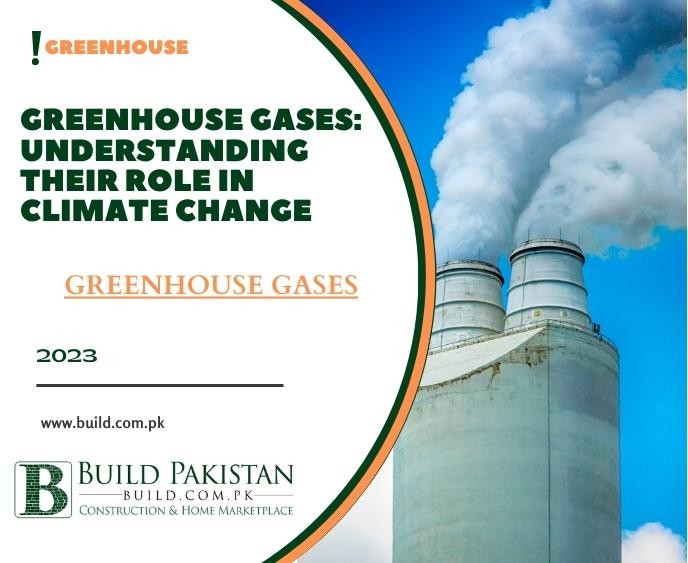Greenhouse Gases: Understanding Their Role in Climate Change

Introduction:
Greenhouse gases have become a household term
in discussions about climate change and global warming. These gases play a
crucial role in regulating Earth's temperature, but human activities have
significantly altered their concentrations in the atmosphere, leading to
unprecedented changes in our climate. In this comprehensive blog, we will delve
deep into the world of greenhouse gases, exploring their sources, types,
effects, and the urgent need for global action to address this critical
environmental issue.
Understanding Greenhouse Gases:
Greenhouse gases (GHGs) are
naturally occurring compounds found in the Earth's atmosphere. They are called
"greenhouse gases" because, like the glass of a greenhouse, they
allow sunlight to enter the atmosphere while trapping heat. This natural
greenhouse effect is essential for maintaining a habitable temperature on
Earth, as it keeps the planet warm enough to support life.
Types of Greenhouse Gases
Several gases contribute to the
greenhouse effect, with the most prominent ones being:
Carbon Dioxide (CO2):
CO2 is the primary greenhouse gas
emitted by human activities. It results from the combustion of fossil fuels,
deforestation, and various industrial processes.
Methane (CH4):
Methane is released during the production and
transport of coal, oil, and natural gas. It is also produced by livestock digestion
and the decay of organic waste in landfills.
Nitrous Oxide (N2O):
Nitrous oxide is emitted from
agricultural and industry al activities, as well as from the combustion of
fossil fuels and biomass.
Water Vapor (H2O):
While water vapor is the most abundant
greenhouse gas, its concentration in the atmosphere is primarily controlled by
natural processes. Human activities have minimal direct influence on water
vapor levels.
Fluorinated Gases:
These synthetic gases, including
hydrofluorocarbons (HFCs), perfluorocarbons (PFCs), and sulfur hexafluoride
(SF6), are used in industrial applications, refrigeration, and air
conditioning. They have high global warming potentials.
Sources of Greenhouse Gas Emissions
Human activities are the
primary sources of increased greenhouse gas emissions, with the following
sectors being major contributors:
Energy:
The burning of fossil fuels for electricity and heat
production, as well as transportation, accounts for a significant portion of
CO2 emissions.
Agriculture:
Agricultural practices, including enteric
fermentation in livestock, rice cultivation, and the use of synthetic
fertilizers, contribute to methane and nitrous oxide emissions.
Deforestation:
The removal of forests for agriculture,
urbanization, and logging reduces the Earth's capacity to absorb CO2, releasing
stored carbon into the atmosphere.
Industrial Processes:
Industrial activities, particularly
those involving the production of cement, steel, and chemicals, release
greenhouse gases such as CO2 and methane.
Waste Management:
Landfills and waste treatment processes
emit metha ne as organic waste decomposes.
Effects of Greenhouse Gases
The increased concentrations of
greenhouse gases in the atmosphere have led to several adverse effects:
Global Warming:
The Earth's average surface temperature has
risen due to the enhanced greenhouse effect, resulting in global warming.
Climate Change:
Elevated temperatures contribute to changes
in weather patterns, causing more frequent and severe weather events, including
hurricanes, droughts, and heatwaves.
Melting Polar Ice and Glaciers:
Rising temperatures lead to
the melting of polar ice caps and glaciers, contributing to rising sea levels.
Ocean Acidification:
Increased CO2 levels in the atmosphere
are absorbed by the oceans, leading to ocean acidification, which harms marine
life.
Biodiversity Loss:
Changing climates and habitats threaten
various species, leading to shifts in ecosystems and potential species
extinctions.
Mitigating Greenhouse Gas Emissions
Addressing greenhouse
gas emissions is a global imperative to combat climate change. Key strategies
include:
Transition to Renewable Energy: Shifting to renewable energy
sources like wind, solar, and hydroelectric power can reduce CO2 emissions from
the energy sector.
Energy Efficiency: Improving energy efficiency in industries,
transportation, and buildings can significantly lower emissions.
Reforestation and Afforestation: Planting trees and restoring
forests can absorb CO2 and mitigate emissions.
Sustainable Agriculture: Implementing sustainable farming
practices can reduce methane and nitrous oxide emissions from agriculture.
Carbon Capture and Storage (CCS): Developing CCS technologies
can capture CO2 emissions from industrial processes and power plants.
Conclusion:
Greenhouse gases are pivotal in regulating
Earth's temperature, but the increased concentrations resulting from human
activities have l ed to climate change and its associated impacts. It is
imperative that we take urgent and coordinated action to mitigate greenhouse
gas emissions through cleaner energy sources, sustainable practices, and
technological innovations. By understanding the role of greenhouse gases and
their consequences, we can work collectively to address this global challenge
and safeguard the planet for future generations.









